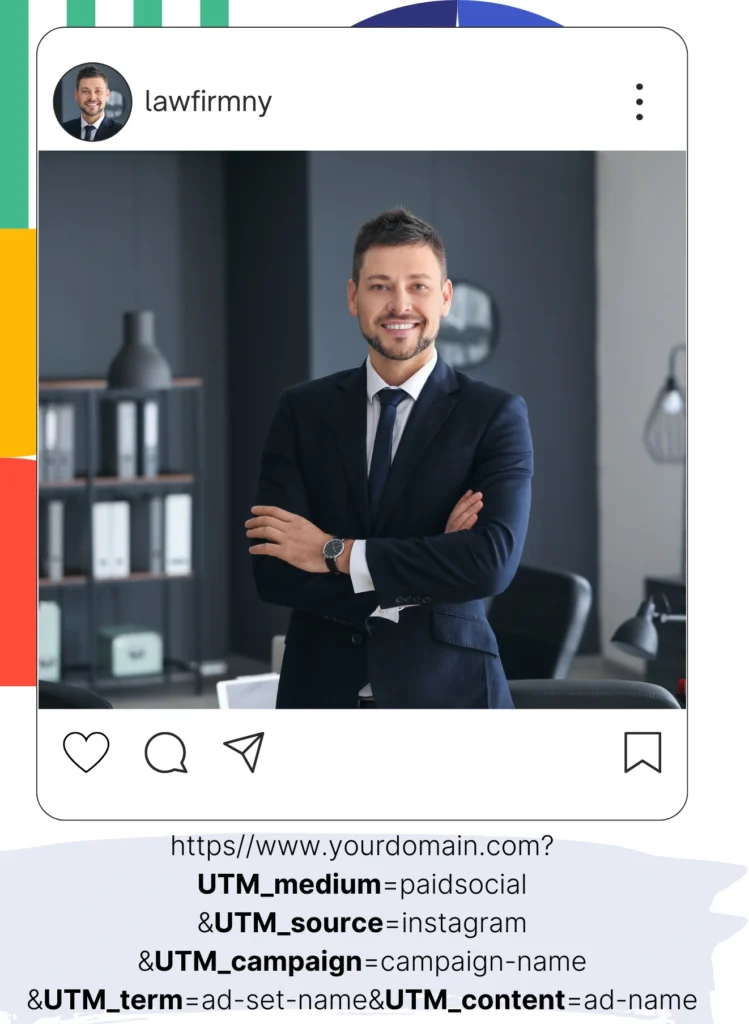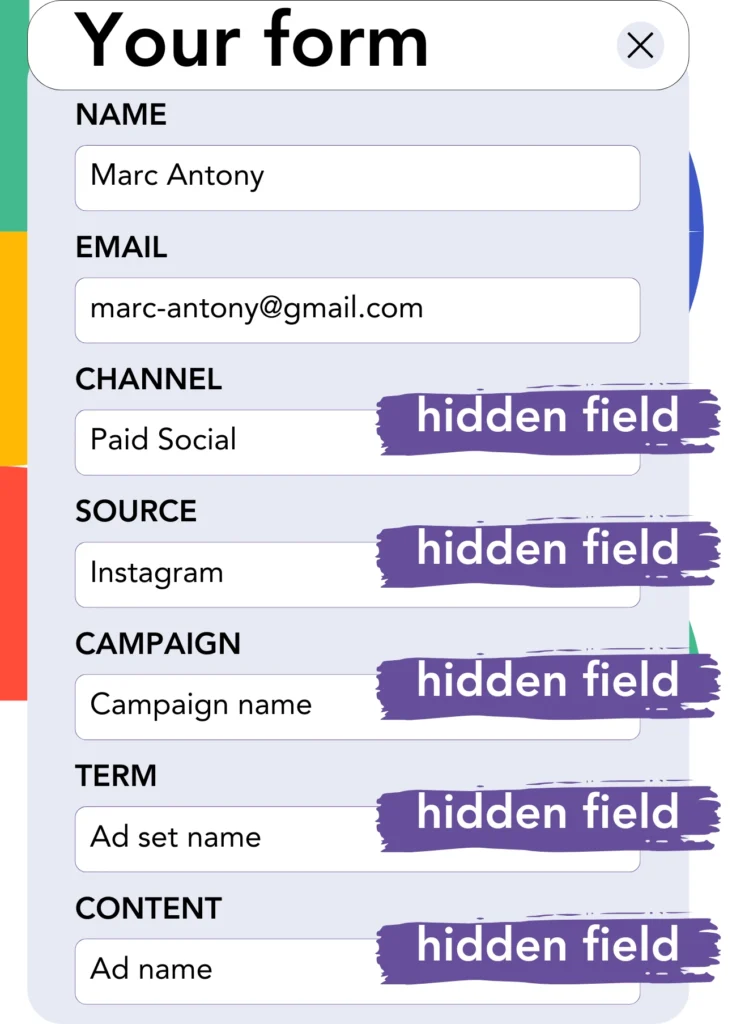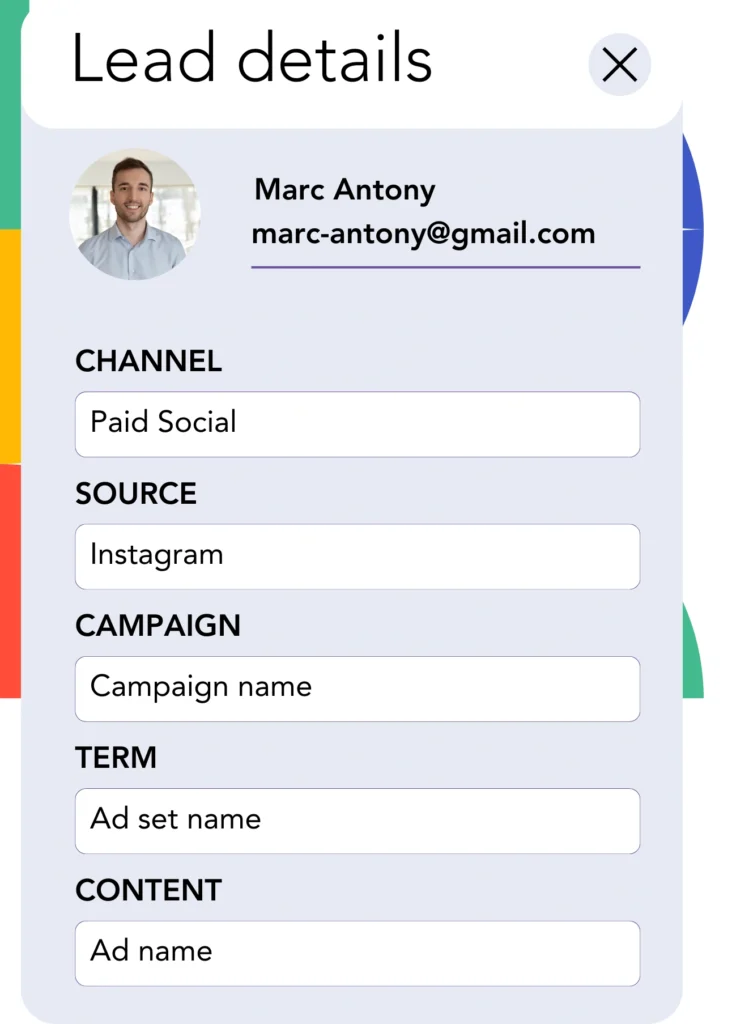Your Instagram-generated leads are sent to Sugar CRM, yet connecting each one to an exact ad isn’t doable. When leads turn into customers, there’s no route to connect them to the original ad.
Without tracking, assessing the impact of your Instagram ads becomes difficult, leaving you uncertain about which ads are effective. As a result, you may invest in ads without knowing their actual outcomes.
Luckily, an effective solution allows each lead to be connected to the exact Instagram campaign, ad set, and ad from which it originated.
Let’s break down each step together!
How to Track Instagram Ads in Sugar CRM
Step 1: Add Leadsources in the head tag of your website

Step 2: Add the UTM parameters to your Instagram ads

For tracking Instagram ad data, place UTM parameters in your ad URL to log campaign, ad set, and ad. Try this example:
UTM_medium=paidsocialUTM_source=instagramUTM_campaign=campaign-nameUTM_term=ad-set-nameUTM_content=ad-name
The completed URL will look like this:
https://www.yourdomain.com/?UTM_medium=paidsocial&UTM_source=instagram&UTM_campaign=campaign-name&UTM_term=ad-set-name&UTM_content=ad-nameImportant: Leadsources compiles every lead source detail, even in the absence of UTM parameters, ensuring thorough tracking for each lead.
Step 3: Add the hidden fields in your form

Hidden fields are form components that users cannot see, but they facilitate the purpose of storing information that goes with the form submission.
Leadsources stores the lead source information in hidden fields found in your form. Consequently, when a lead submits the form, these fields are populated with Instagram ad data automatically.
Leadsources integrates easily with all leading form builders. For comprehensive instructions on adding hidden fields in your form, please follow this guide.
Step 4: Capture the Instagram ads data in Sugar CRM

When users interact with your ads and reach your website, Leadsources captures the Instagram campaign, ad set, and ad data, along with other data points.
Leadsources populates the hidden fields of your form with Instagram ads data.
Once the form is submitted, you can review the Instagram ad data and lead information in Sugar CRM (This requires establishing a connection with Sugar CRM).
How does Leadsources work?
Whenever a visitor clicks on your ads and arrives on your site, Leadsources retrieves Instagram ad data and places it in the hidden fields of your form. Once the form is submitted, this data is forwarded to Sugar CRM, along with the lead information you gathered (like name and email).
Leadsources tracks all lead source information related to every lead generated:
| Lead source data | Fetched automatically |
| Channel | ✅ |
| Source | ✅ |
| Campaign | ✅ OR use UTM_campaign |
| Content | UTM_content parameter is required |
| Term | UTM_term parameter is required |
| Landing page | ✅ |
| Landing page subfolder | ✅ |
The table above illustrates that in instances where UTM parameters aren’t viable—like organic sources such as Google search or Instagram bio links—Leadsources effectively fetches some lead source data:
- Channel
- Source
- Campaign
- Landing page
- Landing page subfolder
Unlike other systems, Leadsources monitors lead source data across all marketing channels, including both organic and paid advertising.
Performance reports: Lead, sales, and revenue by source
Monitoring Instagram ads data in Sugar CRM gives you the ability to create performance reports, such as:
- Leads, sales, and revenue by channel
- Leads, sales, and revenue by source
- Leads, sales, and revenue by campaign (aka. Instagram campaign)
- Leads, sales, and revenue by term (aka. Instagram ad set)
- Leads, sales, and revenue by content (aka. Instagram ad)
This provides the means to adjust your Instagram budget based on the campaigns, ad sets, and ads that yield the highest leads, sales, and revenue.
Let’s outline some of the reports you can generate:
1. Lead source reports
Create performance reports that show the number of leads acquired from:
- Channel
- Source
- Campaign (aka. Instagram campaign)
- Term (aka. Instagram ad set)
- Content (aka. Instagram ad)
- Landing page
- Landing page subfolder
Example #1: Leads by channel
This report gives you clarity on which channel attracts the most leads.

Example #2: Leads by Instagram campaign
You can now shift your focus to a specific lead source (e.g., Instagram) and analyze the lead generation from each Instagram campaign.

Example #3: Leads by Instagram ad
Once you identify the Instagram campaign that results in the most lead acquisition, you can assess which particular ad group or ad is generating those leads.

2. Sales and revenue source reports
After identifying the Instagram campaign, ad set, and ad responsible for our leads, we need to find out if these leads are resulting in sales and revenue.
To execute this, integrate your leads with a CRM such as Sugar CRM. This integration facilitates the tracking of sales and revenue generated through various channels, sources, Instagram campaigns, ad sets, ads, landing pages, and their subfolders.
Utilizing this information, you can refine your Instagram ad approach to prioritize the channels, sources, campaigns, ad sets, and ads that yield the highest sales and revenue.
A series of sales and revenue reports can be formulated, including:
- Sales and revenue by channel
- Sales and revenue by source
- Sales and revenue by campaign
- Sales and revenue by term (e.g., Instagram ad set)
- Sales and revenue by content (e.g., Instagram ad)
- Sales and revenue by landing page
- Sales and revenue by landing page subfolder
Example Scenario:
| Channel | Search Paid | Social Paid |
|---|---|---|
| Leads | 50 | 75 |
| Sales | 5 | 6 |
| Average Order Value | $150 | $100 |
| Revenue | $750 | $600 |
Following the initiation of ads on Google and Instagram, the first “Leads by Channel” report demonstrated that Social Paid ads (Instagram) led to more leads than Search Paid ads.
However, after analyzing the sales and revenue metrics in Sugar CRM, it became evident that the Search Paid channel outperformed the Social Paid channel in terms of revenue despite attracting fewer leads. This led you to adjust your budget to focus more on the Search Paid channel.
LeadSources tracks the source of each lead in Sugar CRM, whether they come from ads, organic search, social, email, etc. and syncs that data with each submission. See the full breakdown on the lead source in Sugar CRM page.

